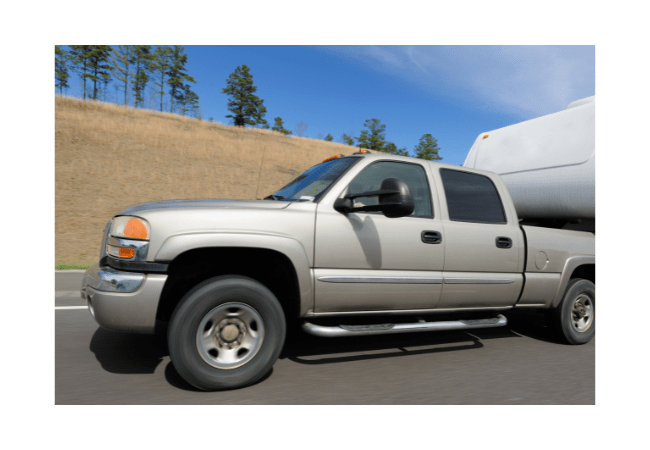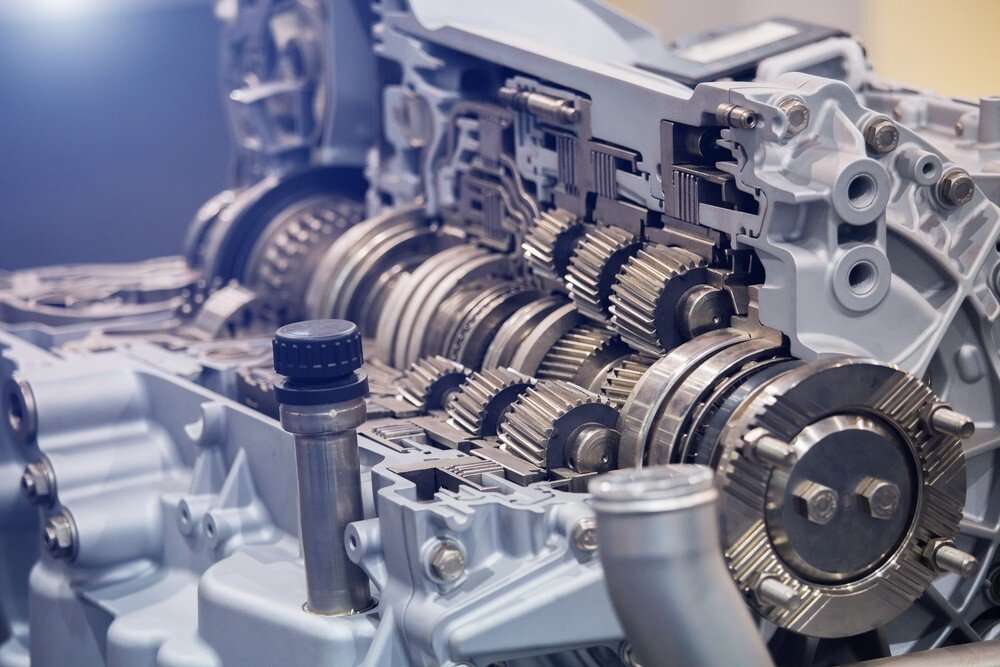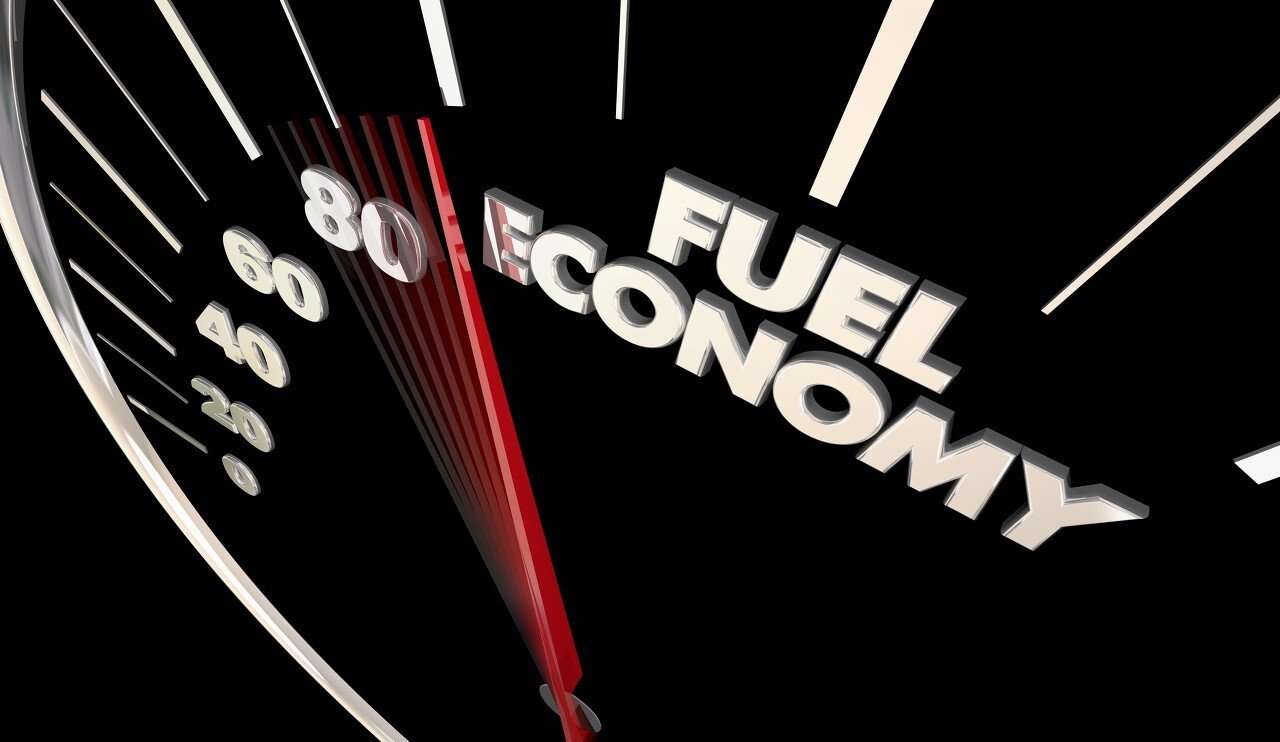Duramax owners may be interested in getting better fuel mileage out of their trucks. Getting better fuel economy isn’t something that we think about when driving.
However, if you have a way to increase your fuel economy just by changing out a few diesel truck parts, it might be worth looking into. After all, keeping your current truck while getting better mileage is something everyone can get behind.
The best way of how to get 30+ mpg with a Duramax is to install a series of modifications that will make your truck more fuel-efficient. There are many modifications out there for your truck, and you can go to extreme measures like swapping an entirely different engine into this truck. It’s possible to improve gas mileage by making these emissions-related modifications to your truck.
At first glance, most people would doubt that you could increase your payload with a Duramax diesel, but it’s possible to do so with aftermarket parts. Many of these same people drive down the highway on their trucks not realizing that their trucks could be much more capable and have better fuel efficiency than what is currently installed and they aren’t utilizing everything they have in their vehicles
Let’s discuss in detail how to get 30+ MPG with a Duramax from a different method.
Jump to
- 1 How to Get 30+ MPG With a Duramax
- 1.1 Replace the Parts with New Ones
- 1.2 Modify the Exhaust System
- 1.3 Use the Right Fuel and Tune it Properly
- 1.4 Modify the Engine Powertrain
- 1.5 Modify the Cooling System
- 1.6 Buy the New Engine
- 1.7 Modify or Replace the Transmission
- 1.8 Modify the Drive Shaft
- 1.9 Modify the Suspension System
- 1.10 Modify the Radiator
- 1.11 Modify Exterior Components
- 2 A Brief Discussion on Average MPG For Stock Duramax Trucks
- 3 General Tips to Reduce the Duramax Engine’s Fuel Consumption
- 4 How a Diesel Engine Works
- 5 Frequently Asked Questions
- 5.1 Question 1: Is it possible to get 30+ mpg with a Duramax?
- 5.2 Question 2: What is the best performance tuner for a Duramax?
- 5.3 Question 3: What air intake and exhaust system should I install on my Duramax?
- 5.4 Question 4: Will a bed cover and tailgate delete improve my fuel economy?
- 5.5 Question 5: How can I drive more conservatively to improve my fuel economy?
- 5.6 Question 6: What tires should I use to improve my fuel economy?
- 5.7 Question 7: What other modifications can I make to my Duramax to improve my fuel economy?
- 5.8 Question 8: What kind of fuel should I use in my Duramax?
- 5.9 Question 9: How can I maintain my Duramax to get the best fuel economy?
- 5.10 Question 10: What kind of driving habits should I avoid to get the best fuel economy?
How to Get 30+ MPG With a Duramax

Here are the different methods through which you can increase the fuel mileage of your Duramax Engine. These are step-by-step instructions that anyone can follow, and you will be able to get more power out of your engine without sacrificing anything.
Replace the Parts with New Ones
Find high-output modifications that will increase fuel efficiency on all of your modification parts. The easiest way to get better fuel mileage is by purchasing new or used parts specifically built with this in mind. This is a good place to start, but there are other more specific areas you can look at if you want optimal results from your Duramax engine.
Modify the Exhaust System
Get a new exhaust system, and this will not only function much better than your current exhaust system but will increase fuel efficiency. This is another simple modification that many diesel truck owners can do on their own without taking it to a shop or paying someone else hundreds of dollars for an exhaust system something you can do yourself.
Use the Right Fuel and Tune it Properly
This is extremely important no matter what kind of truck you have. You need to get the right diesel fuel for your engine and tune it properly so that it runs efficiently. This will also make sure that it doesn’t pollute as much as possible while running on this fuel.
Modify the Engine Powertrain
Talk to your local mechanic and see what they recommend for modifications that will increase engine power and fuel efficiency. A lot of this depends on the year and make of your truck, so you need to be aware of all the available options.
Modify the Cooling System
Improved aerodynamics is one of the best ways to get better gas mileage. This is about as extreme as they come in terms of modifications, and you’ll see a big improvement. If your truck has an aerodynamic problem, then this could be a great way to fix it
Buy the New Engine
If your Duramax diesel engine is too old and not working properly, Get a new Duramax engine or turbo system and this can increase your fuel efficiency. You will be surprised at how much more efficient these engines are, especially when you install all the parts needed to make it run better while still being able to get good fuel mileage.
Modify or Replace the Transmission

You can improve your transmission efficiency by either modifying what you have(which is a lot easier than replacing it) or you can change it out with something else. If you do replace the transmission, make sure that an experienced shop does this so you don’t end up messing anything up.
Modify the Drive Shaft
You can change out the driveshaft, which will lower your truck’s gear ratio. This will help you get better gas mileage and give you more responsive acceleration. These are two things that diesel truck owners like to see in their trucks.
Modify the Suspension System
Get new lift kit parts so that your truck sits higher off the ground. This will reduce your fuel consumption, but combined with other modifications, it can make for a nice all-around Duramax truck that takes you anywhere you want to go and doesn’t cost much money
Modify the Radiator
There are some new radiator parts available that have improved efficiency on their own. You can do another modification to the radiator, which involves getting a better-quality unit for your Duramax engine truck.
Modify Exterior Components
There are many things you can change about your exterior components to get good gas mileage as well. The first thing you need to do is check out what parts are available for your vehicle so that you know if there are any modifications to your truck.
A Brief Discussion on Average MPG For Stock Duramax Trucks

The average MPG for a truck with a Duramax diesel engine varies depending on one’s size, year model, and the number of miles on the particular truck. Inexperienced drivers may see up to 10% less gas mileage in MPG due to inexperience. Experienced drivers typically get closer to the maximum potential miles per gallon. As advertised by Dodge For example 1999 3500 with 149,000 miles is estimated by Dodge to get 11-gals/100mi vs 15.7-gals/100mi by an experienced driver.
We have chosen a couple of model years and types to research the average mpg for trucks with Duramax engines with these considerations in mind.
The following are 2001-2004 Dodge Ram 2500HD equipped with 6-speed manual transmission: 15 city, 20 highway (15.5 average mpg).
The following are 2001-2004 Dodge Ram 2500HD equipped with auto transmission: 17 city, 22 highway (17 average mpg).
A good rule of thumb that works well for our comparisons between diesel truck models is to take the horsepower rating and divide it by 10. For the comparison to standard gas engine trucks, we take the horsepower rating and divide it by 5. This will give us a figure to compare between engines of this size.
General Tips to Reduce the Duramax Engine’s Fuel Consumption
Here are some universal tips and tricks, if you follow them of course you can save your fuel economy and can save your money.
These are as follows:
- Drive your Duramax engine truck like a normal human being
- Avoid jackrabbit starts and stops and accelerate gradually to avoid jackrabbit starts
- Don’t have a heavy foot on the gas pedal
- Don’t race other vehicles (in fact, let them pass)
- Avoid fast acceleration from a standstill or slow down to avoid it
- Keep your tires properly inflated
- Make sure you aren’t carrying heavy loads in the bed of your Duramax engine truck
- Maintain and keep up on any preventative maintenance items that are due
- Buy a lighter load if possible, haul or tow less (or at least cut down if possible)
- Check your Duramax engine for any problems that can be the cause of high fuel consumption
- Update your Duramax diesel with newer parts to improve its fuel efficiency
- Make sure you are using the right amount of power in regards to your trip and load
- Learn how to drive a get a feel for when your Duramax engine is working extra hard
- Don’t let your foot all the way off the accelerator pedal when you are slowing down
- Use cruise control to maintain a consistent speed with your Duramax engine (if it’s safe)
- Use the proper gear depending on how fast you want to go–overdrive helps in that regard if you have it.
How a Diesel Engine Works
The diesel engine, named after its inventor Rudolf Diesel, is a type of internal combustion engine that has carved a niche in various industries due to its efficiency and robustness. From powering ships and trains to trucks and buses, diesel engines have become indispensable in modern transportation and industrial applications. But how does a diesel engine work? This article delves into the mechanics and principles behind these powerful machines.
1. Basic Principle:
At its core, a Duramax diesel engine operates on the principle of compressing air to such a high degree that when fuel is introduced, it ignites spontaneously. This is different from gasoline engines, which rely on spark plugs for ignition.
2. Main Components:
- Cylinder: This is where air and fuel are mixed and combusted. Most diesel engines have multiple cylinders (often arranged in-line, V-shaped, or flat configurations) to produce more power.
- Piston: This moves up and down within the cylinder. Its motion is crucial for the intake, compression, combustion, and exhaust processes.
- Crankshaft: Transforms the linear motion of the pistons into rotational motion, which ultimately drives the wheels or propellers.
- Camshaft: Controls the opening and closing of intake and exhaust valves.
- Fuel Injection System: Responsible for delivering fuel into the cylinders at the right time and in the right amounts.
- Turbocharger: A device that forces more air into the cylinders, allowing for more fuel to be burned and thus generating more power.
3. Four-Stroke Cycle:
Diesel engines typically operate on a four-stroke cycle:
- Intake Stroke: The intake valve opens as the piston moves down, allowing air to fill the cylinder.
- Compression Stroke: As the piston moves up, the air is compressed, increasing its temperature. Diesel engines compress air to a much higher degree than gasoline engines, leading to higher temperatures inside the cylinder.
- Combustion Stroke: Just before the piston reaches the top of its stroke, fuel is injected into the highly compressed and hot air, causing it to ignite spontaneously. The explosion pushes the piston down, turning the crankshaft and producing power.
- Exhaust Stroke: The exhaust valve opens as the piston moves up again, expelling the burned gases out of the cylinder.
4. Fuel Injection:
One of the distinctive features of diesel engines is the method of fuel injection. Unlike gasoline engines, where a mixture of air and fuel is compressed, diesel engines only compress air. Fuel is injected directly into the compressed air at the end of the compression stroke. Modern diesel engines use precise electronic control units (ECUs) to control the timing, amount, and pressure of fuel injection, maximizing efficiency and power while minimizing emissions.
5. Efficiency and Turbocharging:
Diesel engines are known for their efficiency, which arises from their high compression ratios. Compressing air more leads to higher temperatures and pressures, which in turn results in more complete combustion of the fuel and better energy extraction.
Many diesel engines also come equipped with turbochargers. These devices use the engine’s exhaust gases to spin a turbine, which then drives a compressor that forces more air into the engine’s cylinders. This increased air allows the engine to burn more fuel, thus producing more power. Turbocharging also aids in better fuel efficiency and reduced emissions.
6. Benefits and Challenges of Diesel Engines:
Benefits:
- Fuel Efficiency: Diesel engines often deliver better mileage than their gasoline counterparts due to their higher compression ratios and energy-dense fuel.
- Torque: Diesel engines excel in producing high torque at low RPMs, making them ideal for heavy-duty applications like trucks and buses.
- Durability: With robust construction and fewer ignition system components, diesel engines often have a longer lifespan.
Challenges:
- Emissions: Historically, diesel engines emitted higher levels of particulates and nitrogen oxides (NOx). However, with advancements in technology, such as selective catalytic reduction (SCR) and diesel particulate filters (DPF), emissions have been significantly reduced.
- Noise and Vibration: Diesel engines tend to be noisier and produce more vibration than gasoline engines, though modern designs and insulation methods have mitigated these issues.
- Initial Cost: Diesel engines are generally more expensive to produce and purchase due to their complex turbocharging and exhaust after-treatment systems.
Conclusion:
The diesel engine’s working principle, focusing on spontaneous ignition through high compression, sets it apart from other internal combustion engines. Its unique characteristics of efficiency, torque, and durability have made it a favorite for many heavy-duty and long-haul applications. While they face challenges in emissions and noise levels, ongoing innovations continue to make diesel engines cleaner, quieter, and more efficient, ensuring their place in the automotive and industrial world for years to come.
Final Words
It is possible to get better gas mileage out of your Duramax engine diesel truck if you modify the right components. This is not a simple modification and will require you to upgrade a lot of different parts of your engine to improve its fuel efficiency. If you do all of this work yourself, it is well worth it because the amount of money you will save on gas will more than makeup for all the time spent modifying your Duramax engine and other components.
Whatever you choose to do is completely up to you, but hopefully, these suggestions will help you out in the long run if your goal is getting better gas mileage out of your Duramax engine truck.
Frequently Asked Questions
Question 1: Is it possible to get 30+ mpg with a Duramax?
Answer: Yes, it is possible to get 30+ mpg with a Duramax engine, but it requires some modifications and a change in driving habits to reduce fuel consumption. Some of the things you can do to improve your fuel efficiency include:
- Installing a performance tuner to reduce fuel usage
- Upgrading your air intake and exhaust to improve fuel economy
- Installing a bed cover and tailgate delete to help with highway driving
- Removing unnecessary weight from the truck
- Driving conservatively and avoiding jackrabbit starts and stops
Question 2: What is the best performance tuner for a Duramax?
Answer: There are a number of different performance tuners available for the Duramax diesel trucks. Some of the most popular brands include Bully Dog, EFI Live, and Edge Products. When choosing a tuner, it’s important to consider your specific needs and goals. If you’re looking for the best possible fuel efficiency, you’ll want to choose a tuner that offers a variety of fuel economy-oriented tunes.
Question 3: What air intake and exhaust system should I install on my Duramax?
Answer: There are a number of different air intake and exhaust systems available for the Duramax. Some of the most popular brands include AFE, S&B, and MBRP. When choosing an air intake and exhaust system, it’s important to consider your specific needs and goals. If you’re looking for the best possible fuel economy, you’ll want to choose a system that is designed to improve airflow and reduce drag along with reduced fuel consumption.
Question 4: Will a bed cover and tailgate delete improve my fuel economy?
Answer: Yes, a bed cover and tailgate delete can improve your fuel efficiency by reducing drag. A bed cover will help to streamline the airflow over the truck, while a tailgate delete will remove a source of drag.
Question 5: How can I drive more conservatively to improve my fuel economy?
Answer: There are a number of things you can do to drive more conservatively to reduce fuel consumption and improve your fuel efficiency:
- Avoid jackrabbit starts and stops
- Accelerate slowly and smoothly
- Maintain a steady speed
- Coast to red lights and stop signs
- Avoid driving with the windows down
Question 6: What tires should I use to improve my fuel economy?
Answer: When choosing tires for your Duramax, it’s important to consider the tread pattern and the compound. Tires with a low rolling resistance tread pattern and a soft compound will help to improve your fuel economy. Some popular brands and models of tires that are known for good fuel economy include:
- Michelin XLT A/S
- BFGoodrich Long Trail T/A Tour
- Cooper Discoverer AT3 LT
- Goodyear Wrangler AT/S P2
- Firestone Destination AT2
Question 7: What other modifications can I make to my Duramax to improve my fuel economy?
Answer: In addition to the modifications listed above, there are a number of other things you can do to improve your fuel economy and engine power, such as:
- Installing a fuel filter bypass kit
- Upgrading your fuel injectors
- Installing a cold air intake to improve engine performance
- Removing the EGR valve
- Removing the DPF (Diesel Particulate Filter) filter
It’s important to note that some of these modifications may have a negative impact on the performance or emissions of your truck. It’s important to do your research and weigh the pros and cons before making any modifications.
Question 8: What kind of fuel should I use in my Duramax?
Answer: It’s important to use high-quality fuel in your Duramax to ensure optimal performance and fuel economy. Look for fuel that has a high cetane rating. Cetane is a measure of how easily diesel fuel ignites. A higher cetane rating means that the fuel will ignite more easily, which can lead to better fuel efficiency and performance.
Question 9: How can I maintain my Duramax to get the best fuel economy?
Answer: In addition to the modifications listed above, it’s important to properly maintain your Duramax to get the best fuel efficiency. This includes:
- Changing the oil and oil filter regularly
- Replacing the air filter regularly
- Keeping the tires properly inflated with the correct tire pressure
- Checking the brakes and wheel bearings regularly
By properly maintaining your Duramax, you can ensure that it is running efficiently and getting the best possible fuel economy.
Question 10: What kind of driving habits should I avoid to get the best fuel economy?
Answer: In addition to the tips listed above, there are a number of driving habits that you should avoid to get the best fuel economy, such as:
- Jackrabbit starts and stops
- Excessive idling
- Driving at high speeds
- Towing heavy loads
- Using the air conditioner excessively
By following these tips, you can improve your fuel economy and reduce fuel costs at the pump.
I hope these questions and answers are helpful.

My name is Tom Harris, founder of this blog. I’m a mechanical engineer with 20 years of experience in the automotive industry. I’m here to help you with your vehicle’s problems, easy fixes and share my insights and experience so that you can enjoy your rides more.

